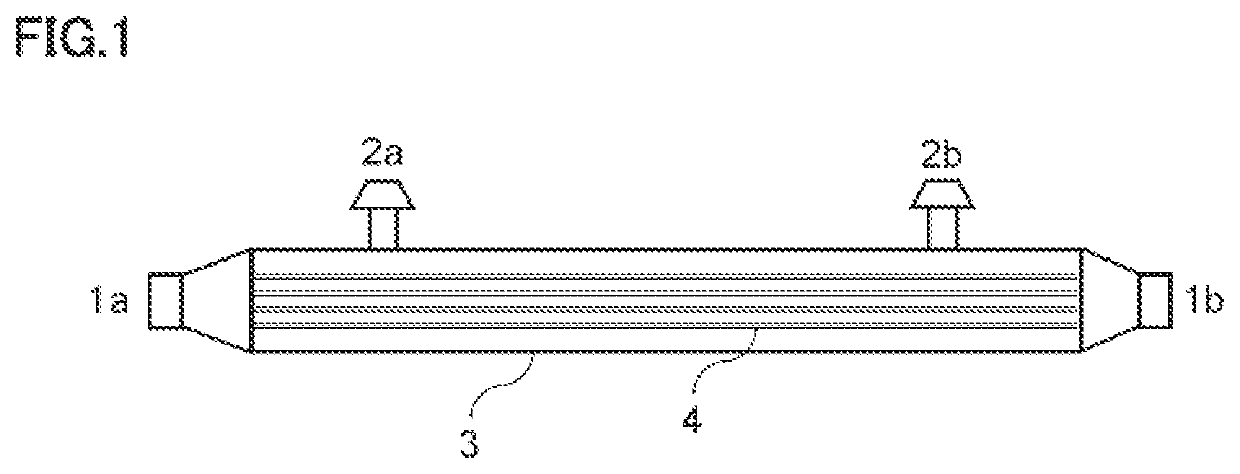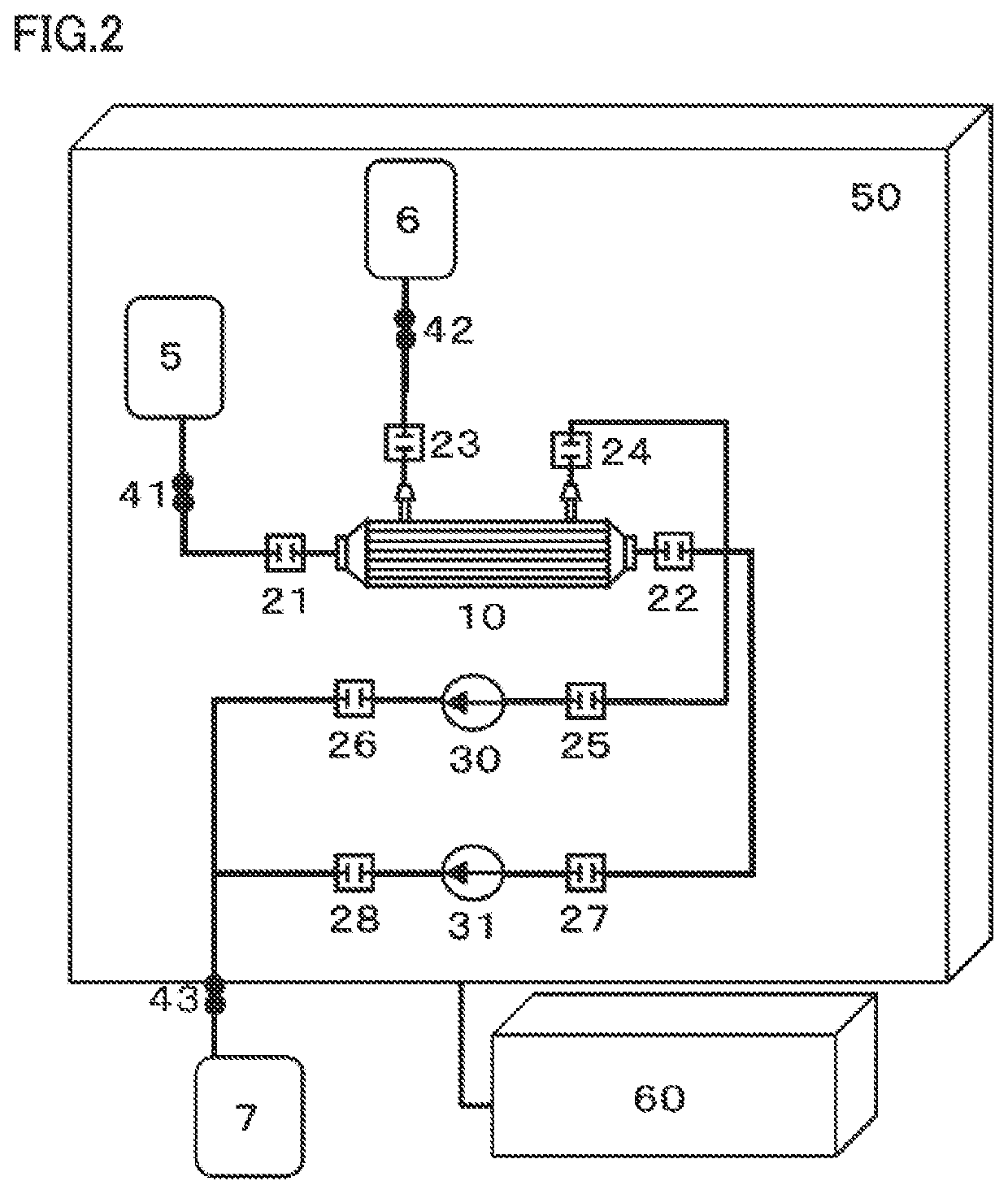Hollow-fiber membrane and hollow-fiber module for cell culture
a cell culture and hollow fiber technology, applied in the field of hollow fiber membranes, can solve the problems of high risk of biological contamination, inability to differentiate into all organs and tissues, and inability to differentiate into specific tissues, and achieve the effect of safe, easy and efficient culturing of various kinds of cells
- Summary
- Abstract
- Description
- Claims
- Application Information
AI Technical Summary
Benefits of technology
Problems solved by technology
Method used
Image
Examples
example 1
(Preparation of Hollow-Fiber Membrane and Hollow-Fiber Module 1)
[0067]20% by mass of polyether sulfone (PES) (4800 P manufactured by Sumitomo Chemical Company, Limited), 0.2% by mass of polyvinyl pyrrolidone (PVP) (K-90 manufactured by BASF Company), 35.91% by mass of N-methyl pyrrolidone (NMP), and 43.89% by mass of triethylene glycol (TEG) were mixed and dissolved, the resulting solution was defoamed to obtain a deposition solution, a mixed liquid of 13.5% by mass of NMP, 16.5% by mass of TEG and 70% by mass of water was provided as a core liquid, the deposition solution and the core liquid were discharged, respectively, from the outside and the inside of a double-tube orifice heated to 70° C., and guided through a 30 cm idle running section into a coagulation bath including water at 75° C., so that a hollow-fiber membrane was formed. The hollow-fiber membrane was washed with water, and then wound up in the form of a bundle. The fiber bundle was cut, and then subjected to forced-a...
example 2
(Preparation of Hollow-Fiber Membrane and Hollow-Fiber Module 2)
[0069]20% by mass of PES, 0.5% by mass of PVP, 35.77% by mass of NMP and 43.73% by mass of TEG were mixed and dissolved, and the resulting solution was defoamed to obtain a deposition solution, a mixed liquid of 13.5% by mass of NMP, 16.5% by mass of TEG and 70% by mass of water was provided as a core liquid, the deposition solution and the core liquid were discharged, respectively, from the outside and the inside of a double-tube orifice heated to 70° C., and guided through a 30 cm idle running section into a coagulation bath including water at 75° C., so that a hollow-fiber membrane was formed. The hollow-fiber membrane was washed with water, and then wound up in the form of a bundle. The fiber bundle was cut, and then subjected to forced-air drying at 60° C. The dried hollow-fiber membrane had an inner diameter of 200 μm, an outer diameter of 300 μm and a thickness of 50 μm.
[0070]Using the obtained hollow-fiber membr...
example 3
(Preparation of Hollow-Fiber Membrane and Hollow-Fiber Module 3)
[0071]20% by mass of PES, 1.0% by mass of PVP, 35.55% by mass of NMP and 43.45% by mass of TEG were mixed and dissolved, the resulting solution was defoamed to obtain a deposition solution, a mixed liquid of 13.5% by mass of NMP, 16.5% by mass of TEG and 70% by mass of water was provided as a core liquid, the deposition solution and the core liquid were discharged, respectively, from the outside and the inside of a double-tube orifice heated to 70° C., and guided through a 30 cm idle running section into a coagulation bath including water at 75° C., so that a hollow-fiber membrane was formed. The hollow-fiber membrane was washed with water, and then wound up in the form of a bundle. The fiber bundle was cut, and then subjected to forced-air drying at 60° C. The obtained hollow-fiber membrane had an inner diameter of 200 μm, an outer diameter of 300 μm and a thickness of 50 μm.
[0072]Next, Using the obtained hollow-fiber ...
PUM
| Property | Measurement | Unit |
|---|---|---|
| contact angle | aaaaa | aaaaa |
| inner diameter | aaaaa | aaaaa |
| inner diameter | aaaaa | aaaaa |
Abstract
Description
Claims
Application Information
 Login to View More
Login to View More - R&D
- Intellectual Property
- Life Sciences
- Materials
- Tech Scout
- Unparalleled Data Quality
- Higher Quality Content
- 60% Fewer Hallucinations
Browse by: Latest US Patents, China's latest patents, Technical Efficacy Thesaurus, Application Domain, Technology Topic, Popular Technical Reports.
© 2025 PatSnap. All rights reserved.Legal|Privacy policy|Modern Slavery Act Transparency Statement|Sitemap|About US| Contact US: help@patsnap.com



